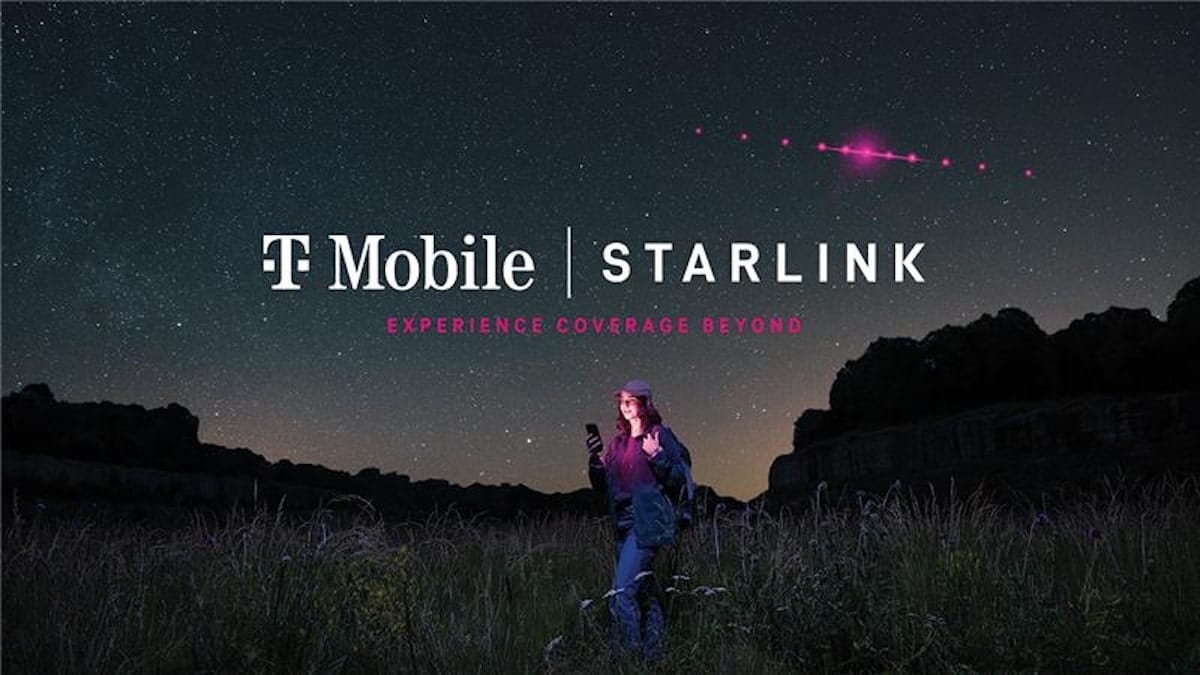T-Mobile has taken a new step toward universal coverage by opening registration for the beta program of its innovative service Starlink Direct-to-Cell. Thanks to a collaboration with Starlink from SpaceX, this technology allows satellites to act as telecommunications towers in space, eliminating coverage gaps in the United States and providing connectivity in traditionally inaccessible regions.
This announcement, which follows the approval of the Federal Communications Commission (FCC), represents a significant advancement in T-Mobile’s strategy to offer global coverage beyond terrestrial networks.
A Future Without Dead Zones
Starlink Direct-to-Cell will begin its beta rollout in early 2025, starting with text messaging and plans to integrate voice calls and data in the future. The service will be available at no additional cost for T-Mobile customers with postpaid voice plans and compatible devices.
“Starlink Direct-to-Cell is the first system that combines a low Earth orbit satellite constellation with terrestrial cellular spectrum, allowing mobile phones to operate in areas of the U.S. where there has never been terrestrial coverage,” explained Mike Katz, President of Marketing, Strategy, and Products at T-Mobile.
Unlike other satellite services, users will not need to make special adjustments to get a signal. Both incoming and outgoing messages will function like any other traditional messaging platform.
Technology That Makes a Difference
The beta program is also designed with a special focus on emergency agencies and businesses, who will be prioritized for access to the service. During recent natural disasters, such as Hurricanes Helene and Milton, T-Mobile and Starlink temporarily activated this system to enable emergency communication when other networks collapsed.
In a typical usage scenario, T-Mobile customers can rely on connectivity in remote areas such as rural zones, mountains, forests, or coastlines, where telecommunications towers are not feasible.
Global Connectivity Expansion
The service is not limited to the United States. T-Mobile and Starlink have created an international alliance that includes operators such as KDDI (Japan), Optus (Australia), One NZ (New Zealand), Salt (Switzerland), Entel (Chile and Peru), and Rogers (Canada). This alliance aims to provide direct satellite roaming worldwide, ensuring that users can stay connected regardless of their location.
How to Register for the Beta Program
Registration is now available on T-Mobile’s website, where interested consumers can sign up. Additionally, businesses and emergency agencies may register through specific channels enabled by the carrier.
A Milestone in Mobile Coverage
The collaboration between T-Mobile and Starlink represents a significant shift in the telecommunications industry. By harnessing low Earth orbit satellites, T-Mobile aims to close the digital divide and provide coverage to over 500,000 square miles of U.S. territory and vast ocean areas.
This development will not only eliminate coverage dead zones but also reduce reliance on expensive satellite phones and provide an accessible and practical solution for the average user.
The Future of Connectivity
T-Mobile and Starlink continue to work to expand this technology and achieve truly global coverage. With an infrastructure that combines terrestrial and satellite networks, the Starlink Direct-to-Cell service promises to transform access to mobile connectivity in remote areas, benefiting consumers, businesses, and emergency services alike.
About T-Mobile
T-Mobile US, Inc. (NASDAQ: TMUS) is one of the leaders in telecommunications in the United States, recognized for its advanced 4G LTE network and its transformative 5G coverage. Headquartered in Bellevue, Washington, T-Mobile operates under the brands T-Mobile, Metro by T-Mobile, and Sprint, providing innovative and accessible services to millions of customers.
via: telephony news

